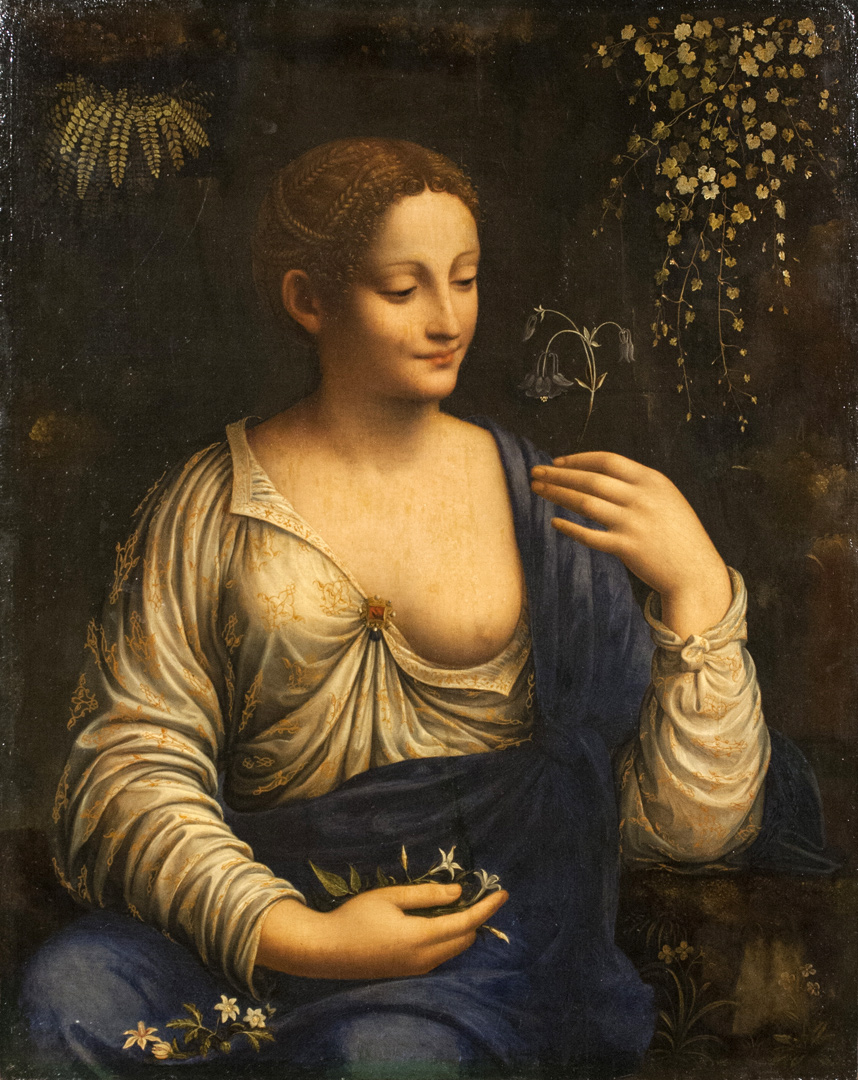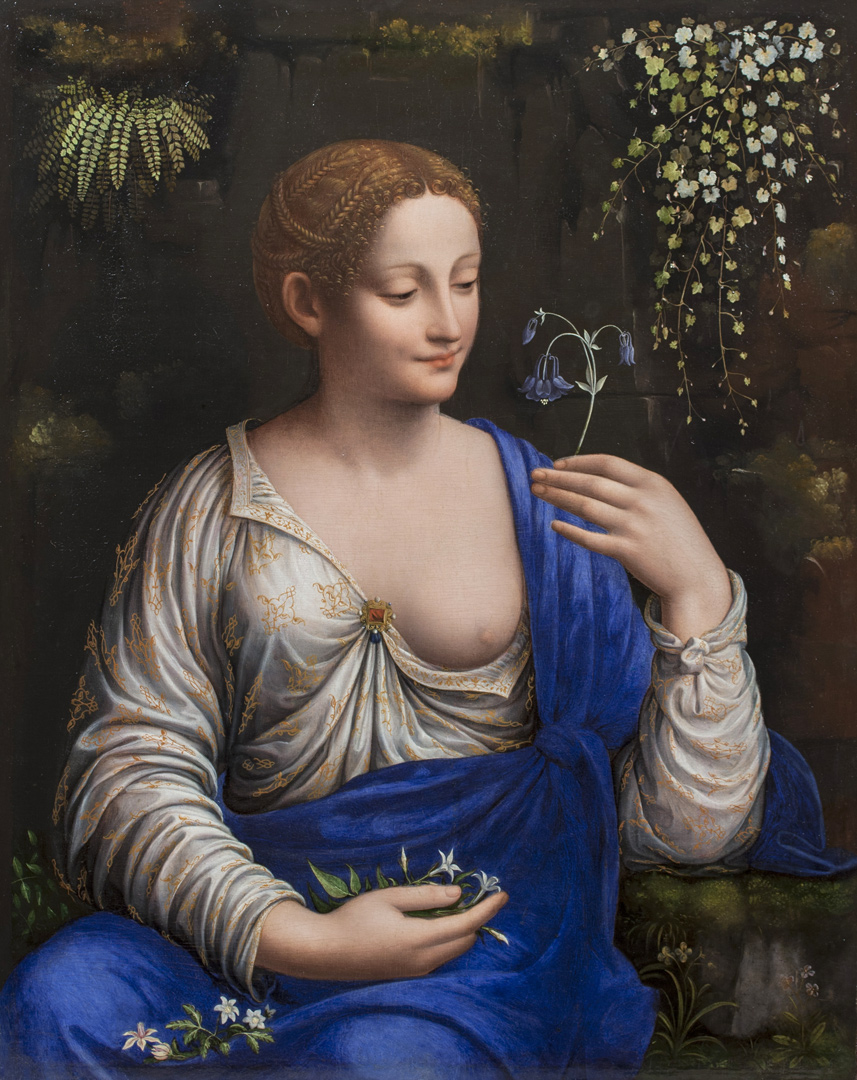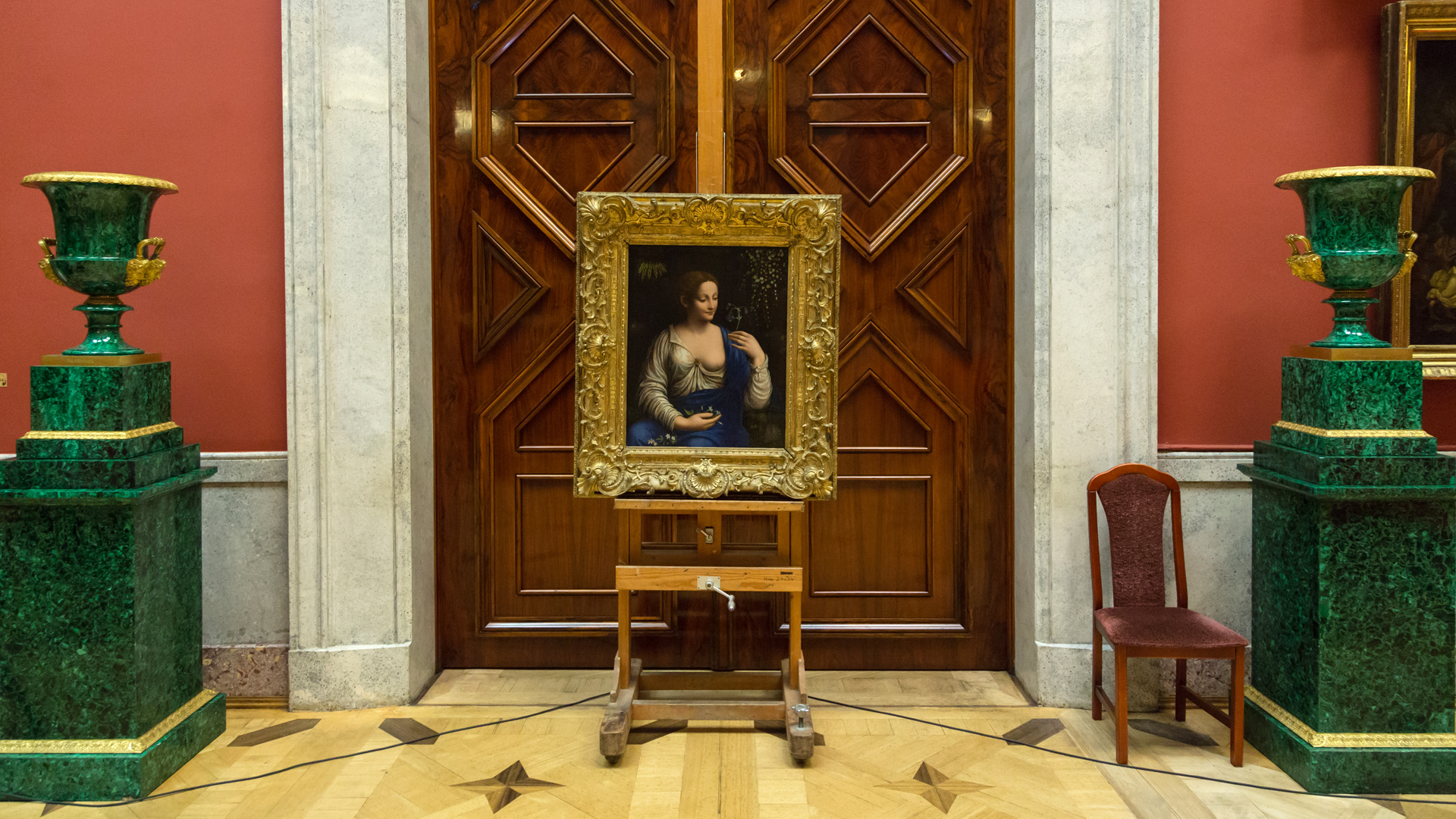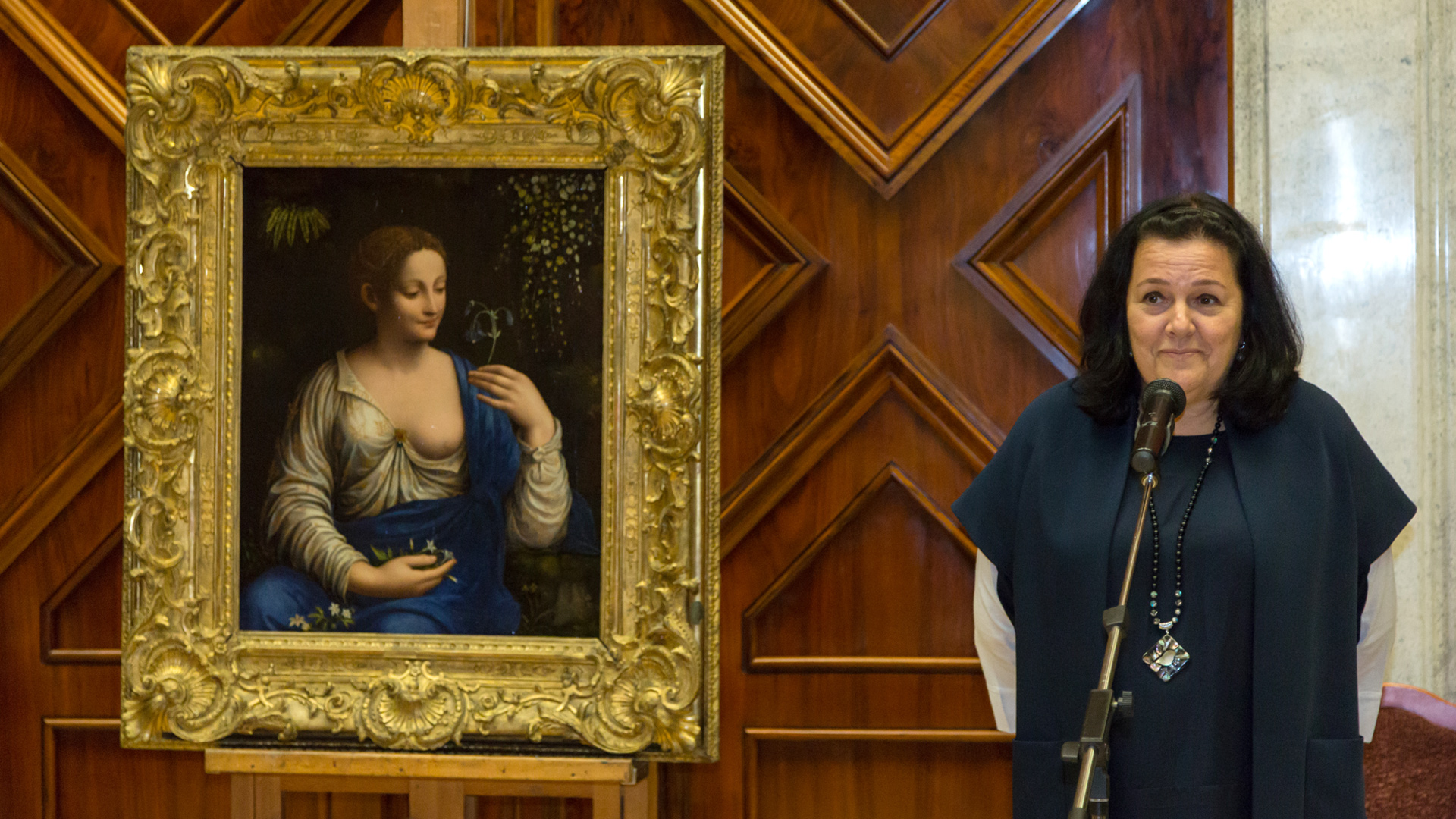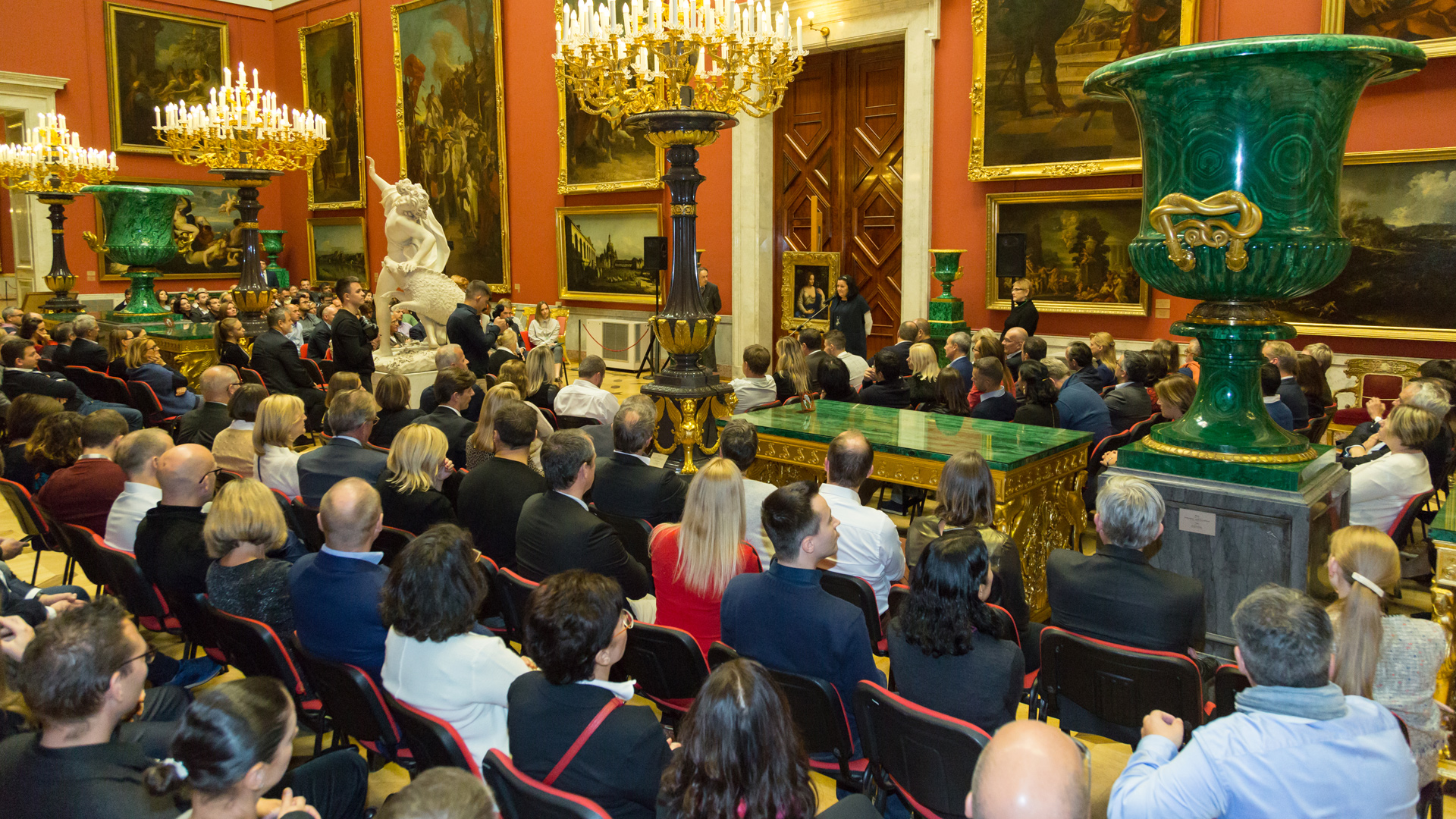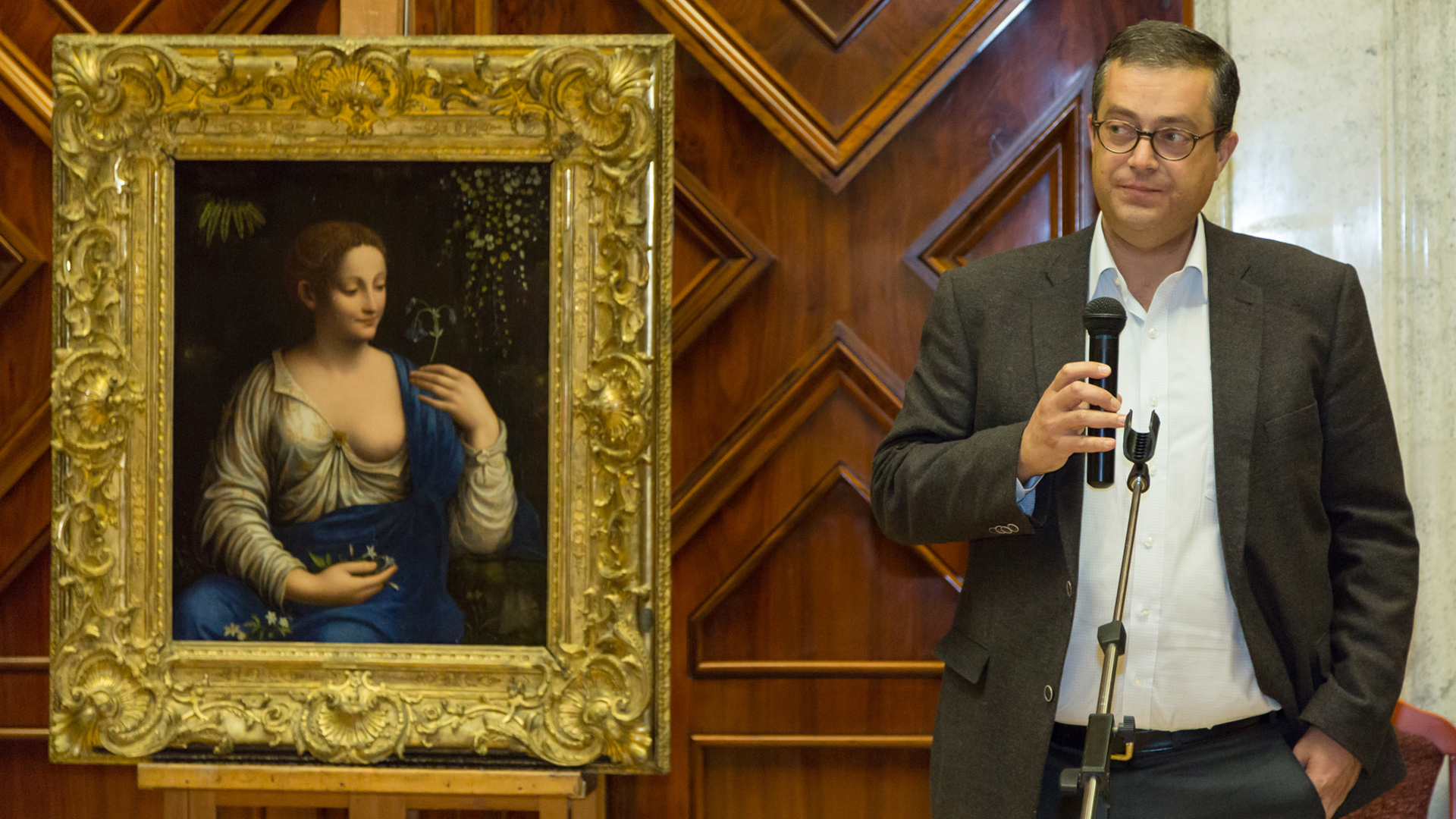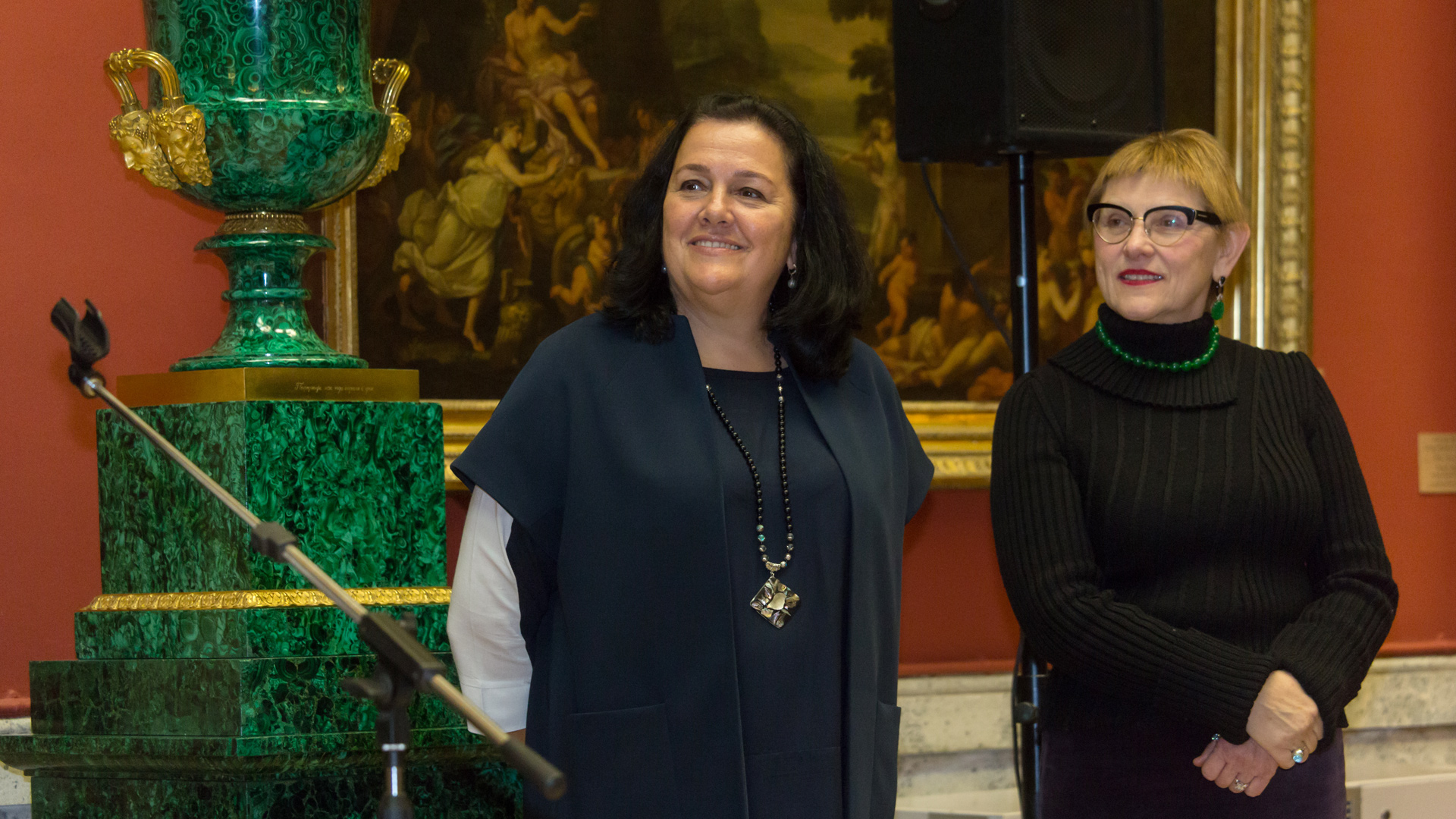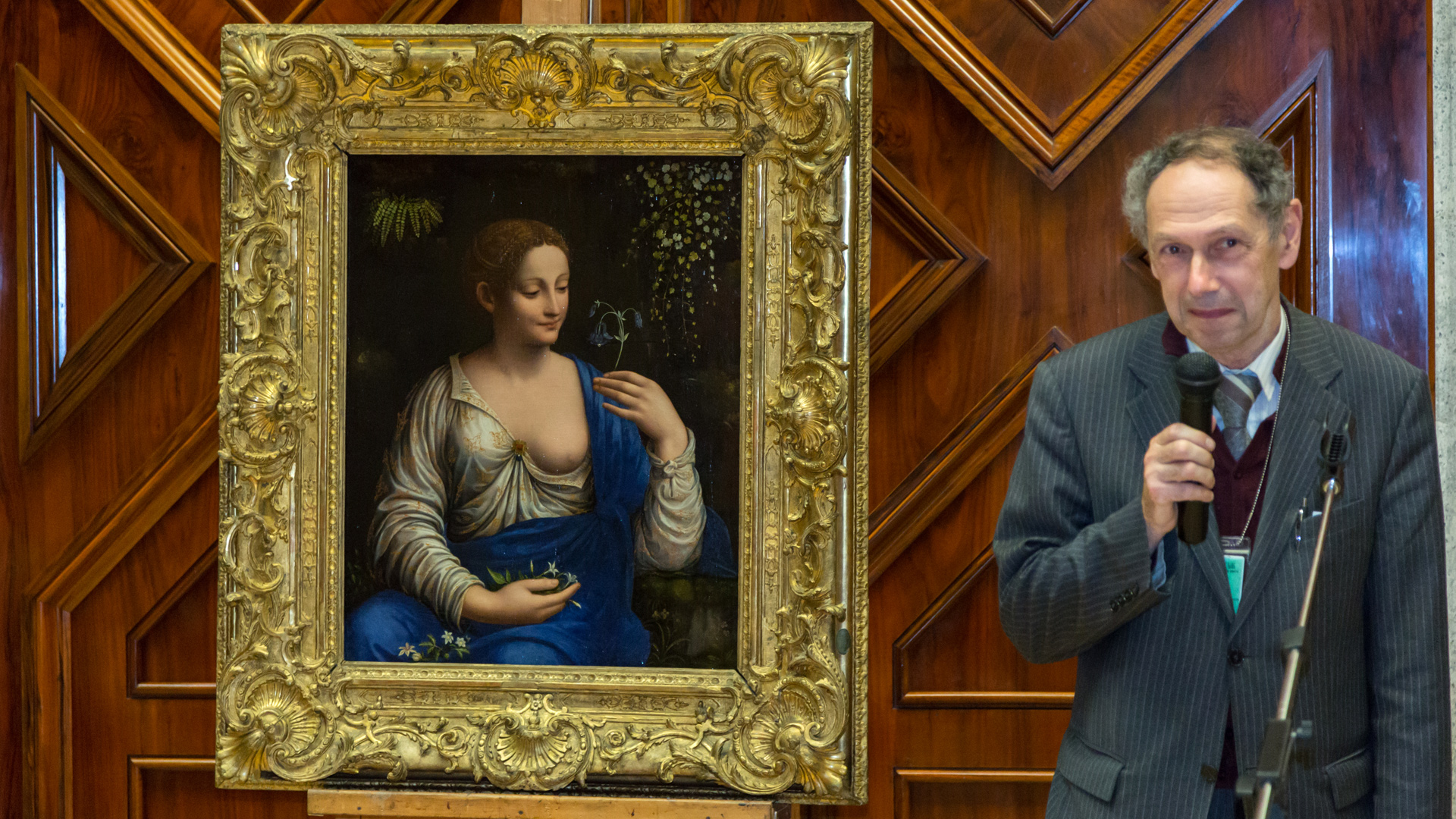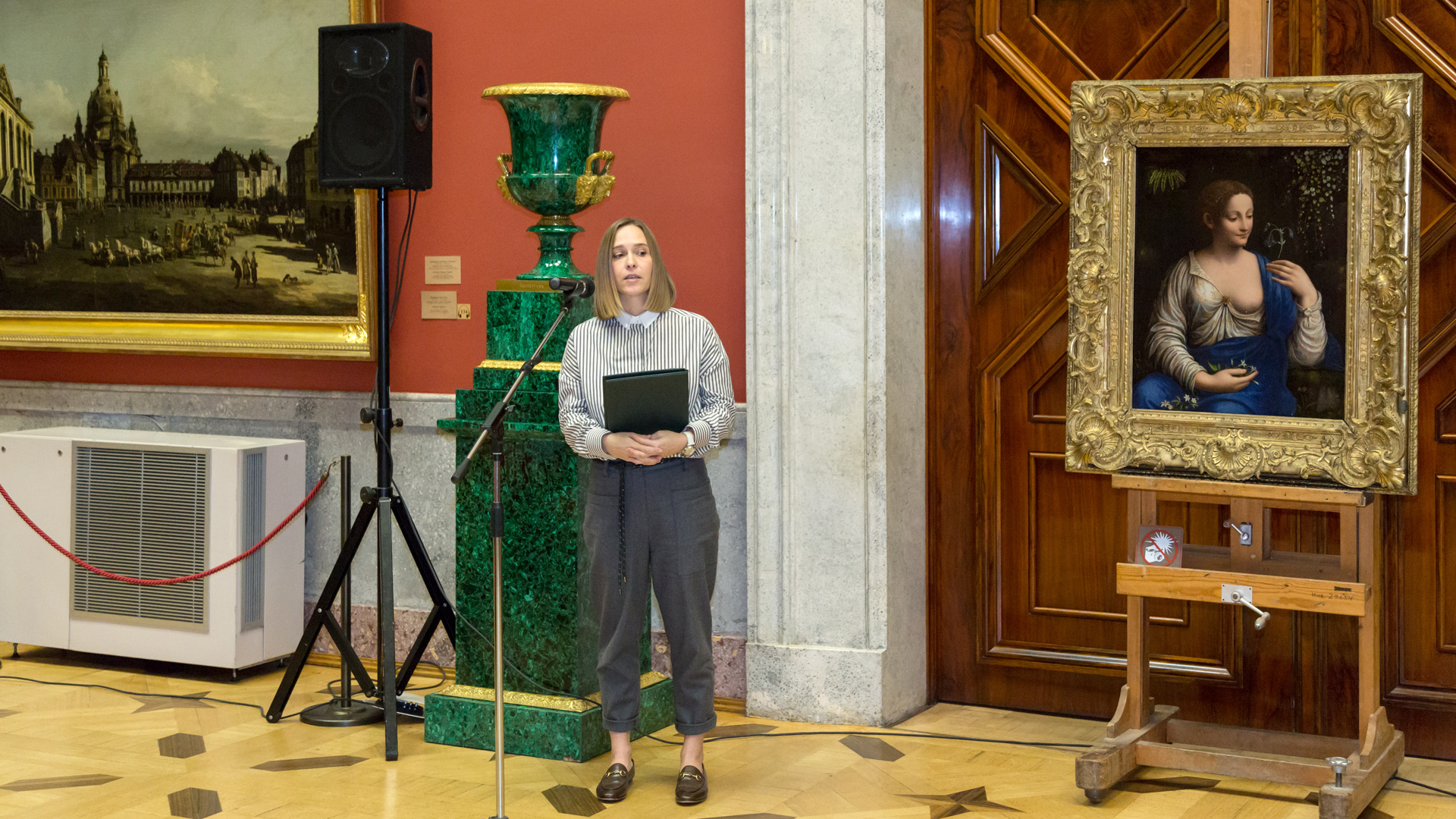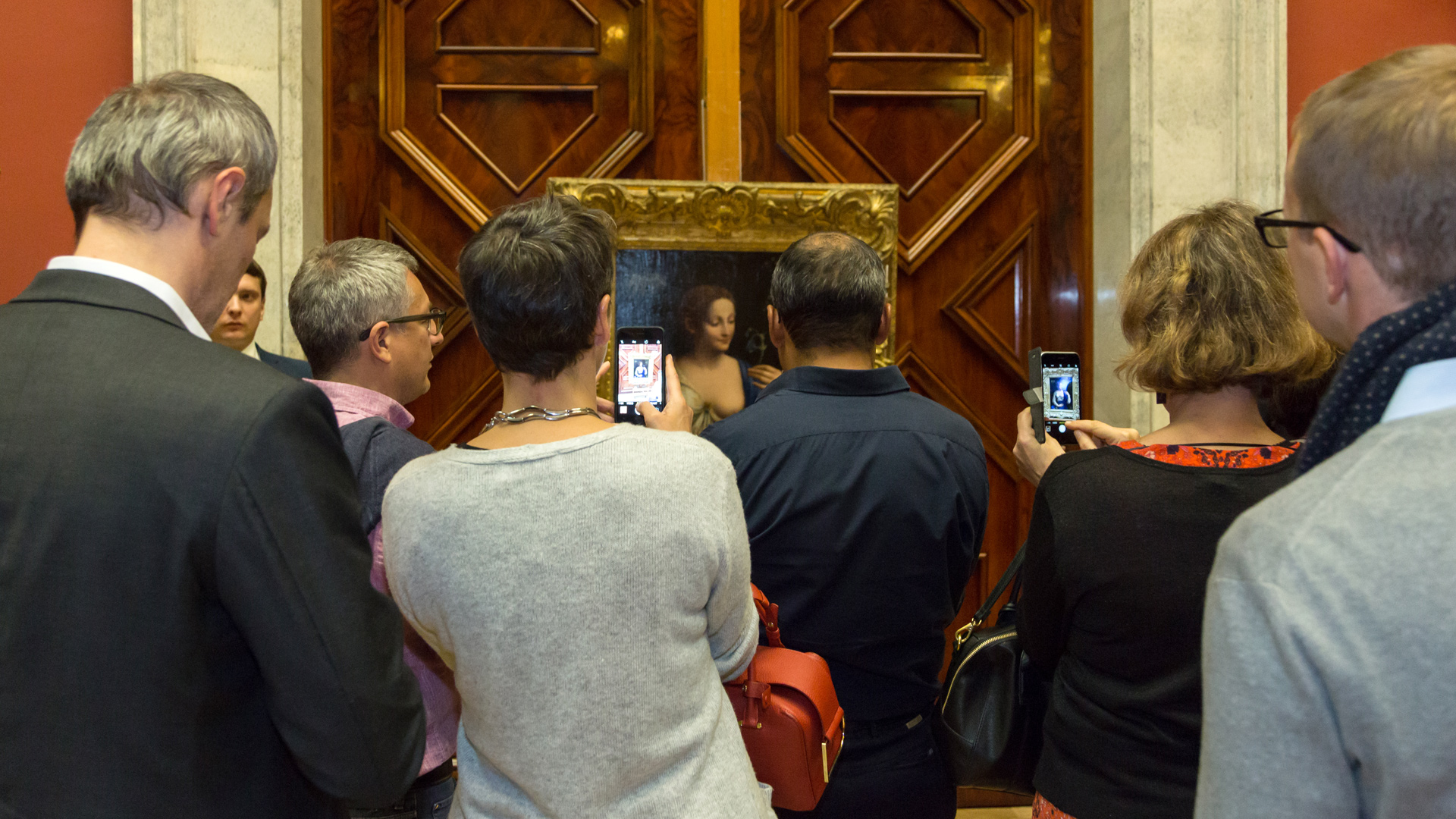Presentation of Francesco Melzi’s painting Flora after the completion of restoration
In ancient mythology, Flora is the wife of Zephyr, the god of the west wind, and the mother of all plants who gives life and nourishes, which is why she is depicted with a bare breast. With a graceful turn of her head, Flora is examining an aquilegia, a flower that symbolizes fertility. The stones of the mysterious grotto in which she is depicted are covered with a variety of plants and flowers.
This work was created in the finest traditions of the school of Leonardo da Vinci, whose favourite pupil and heir Melzi was: soft translucent chiaroscuro modelling of form, a subtly restrained colour scheme, and the gentle half-smile hiding in the corners of the goddess’s mouth.
The technical condition of the picture was not a concern before the start of restoration, but repeated past refreshing of the work meant the original paintwork with its rich colouring was hidden under a thick layer of varnishes of various dates that were badly yellowed and in places clouded. This distorted the impression of the colour scheme and disrupted the chromatic harmony of the composition. Old restoration retouching on damaged areas had darkened considerably. The background details were practically indiscernible. Flora’s wrap appeared to be a flat local patch of blue-green.
Cleaning the picture of later accretions revealed that the artist’s original paintwork was well preserved with only minor losses and abrasions, despite Melzi’s creation having been transferred from the original wood support to canvas in the 19th century.
The restoration revealed details of the composition that had been hidden by later layers and a predominantly cold colour scheme constructed on the subtlest nuances of warm and cool shades, as well as the natural intensity of the aquamarine.
The restoration of the painting was carried out by Maria Shulepova, an artist-restorer of the first category in the Laboratory for the Scientific Restoration of Easel Paintings belonging to the State Hermitage’s Department of Scientific Restoration and Conservation. The keeper of the painting is Tatyana Kustodiyeva, Candidate of Art Studies, leading researcher in the State Hermitage’s Department of Western European Fine Art.
The Deloitte company provided the State Hermitage with support in the restoration of Francesco Melzi’s painting and has become a corporate member of the Hermitage Friends’ Club.
Flora will soon be taking her place in the museum’s permanent display.
